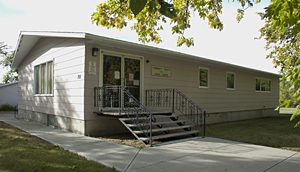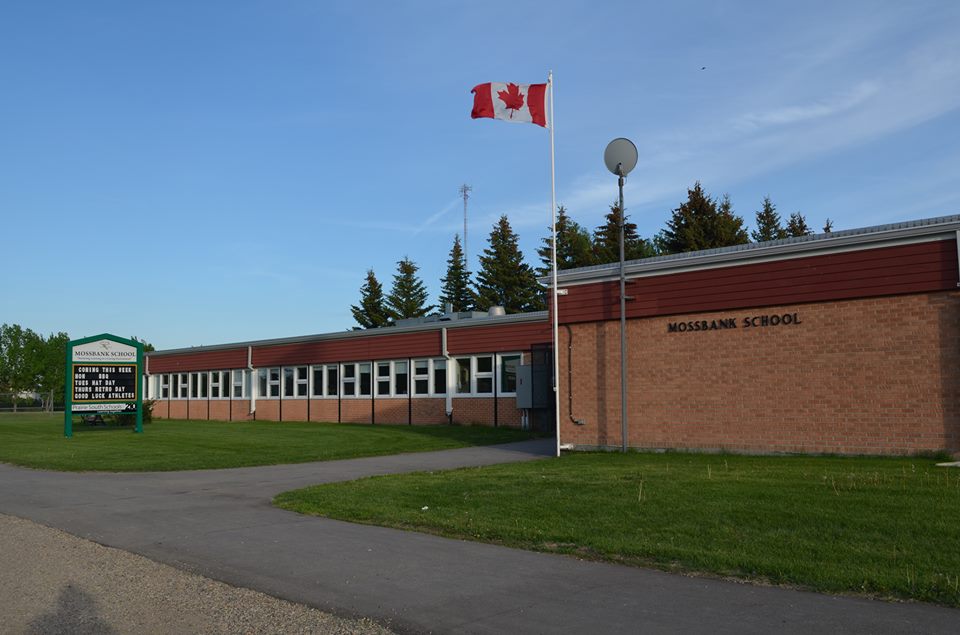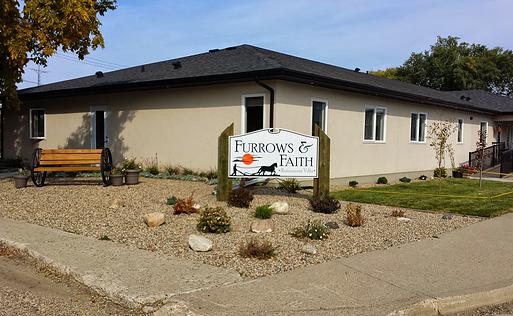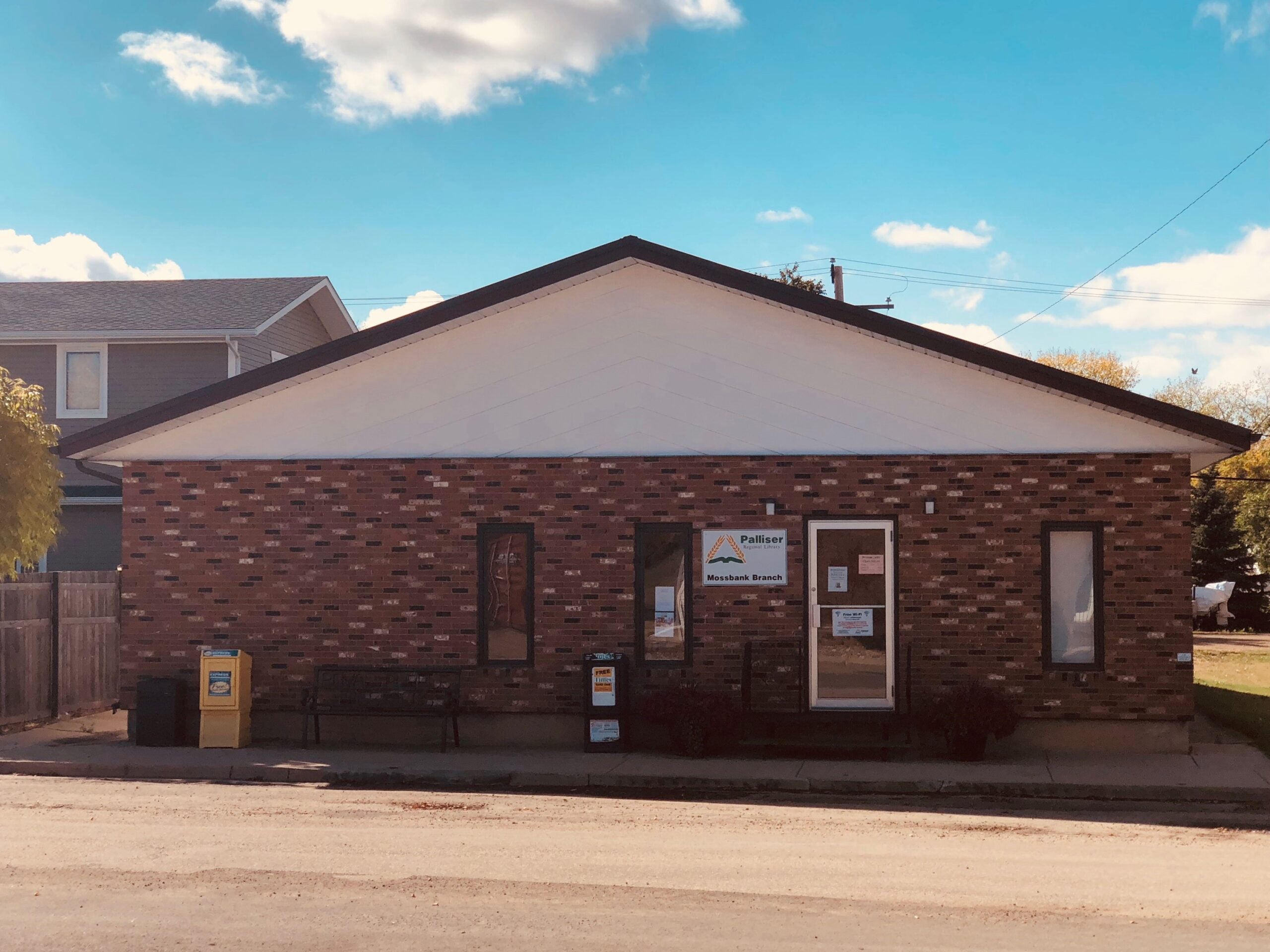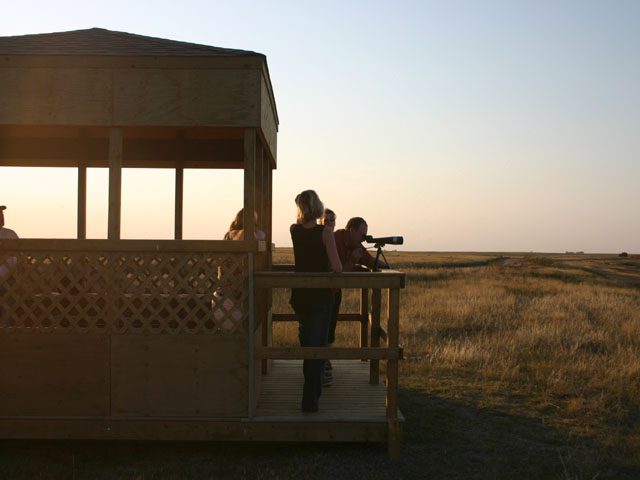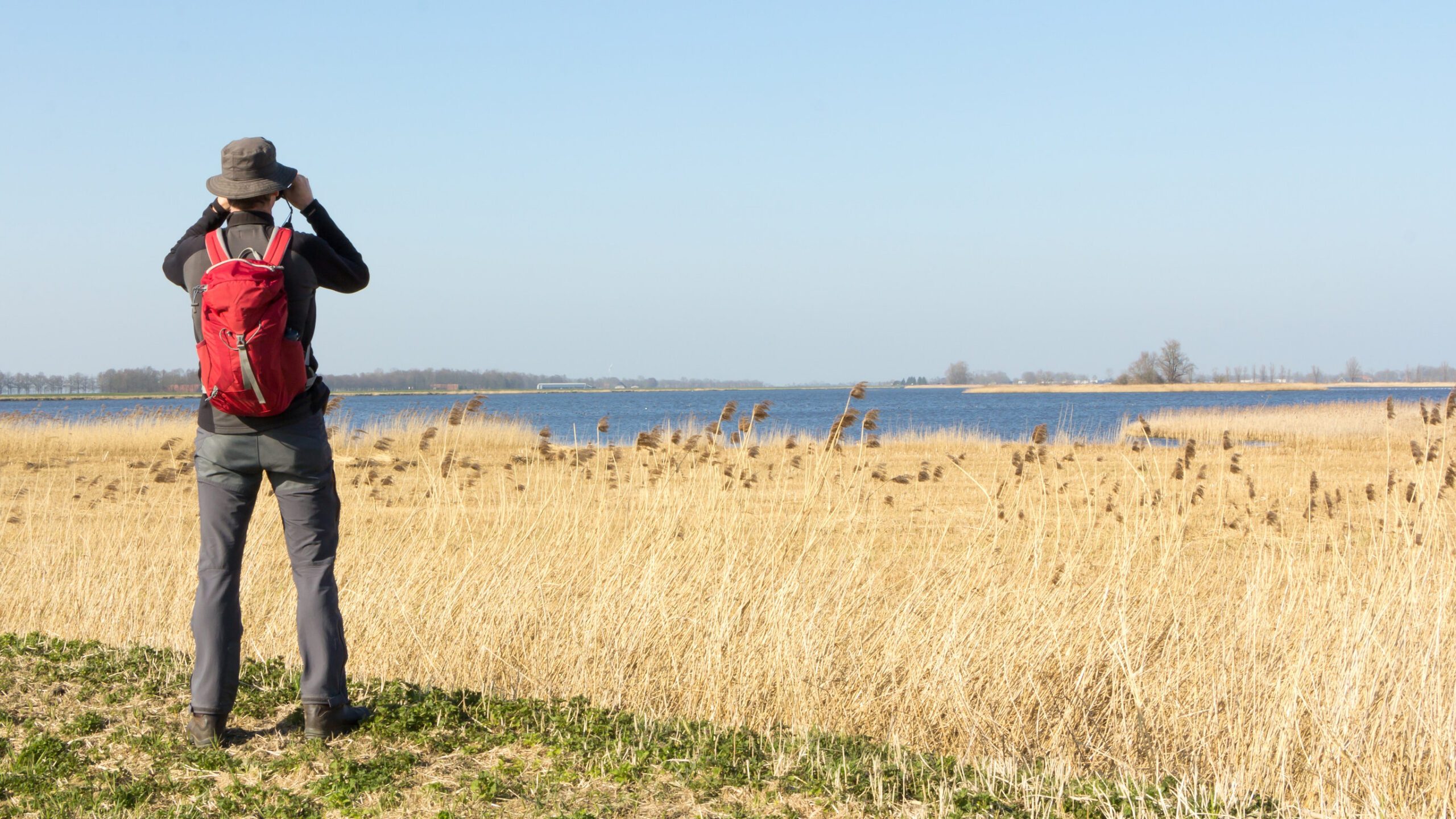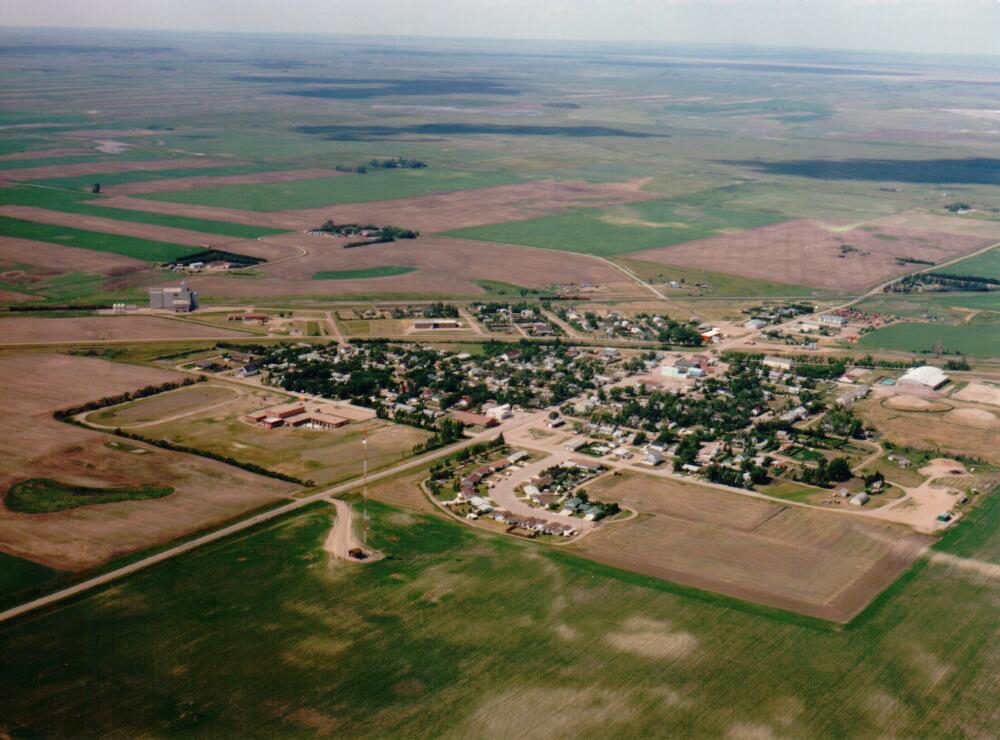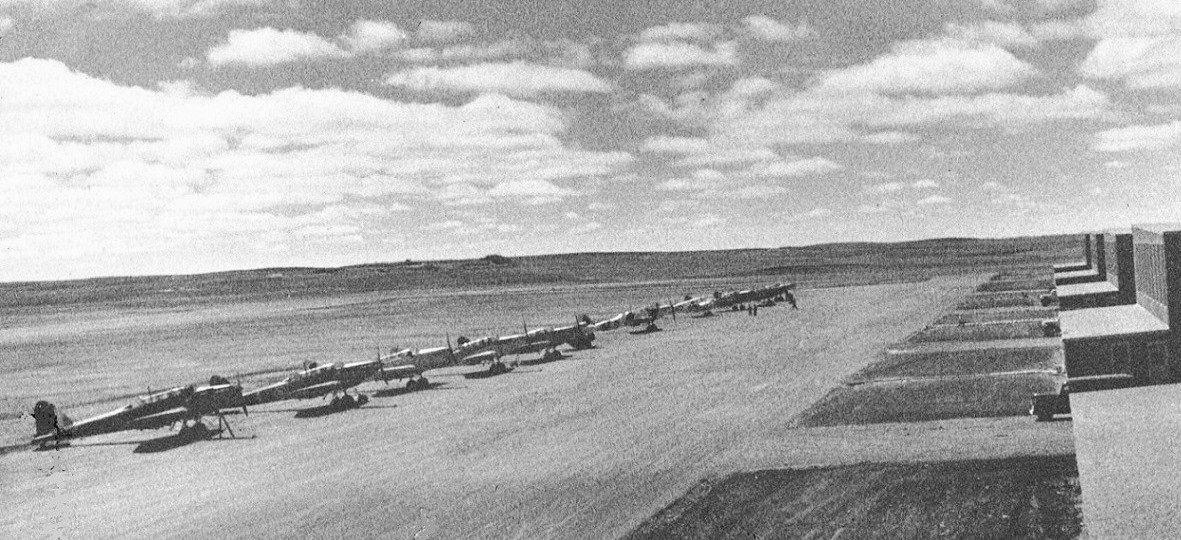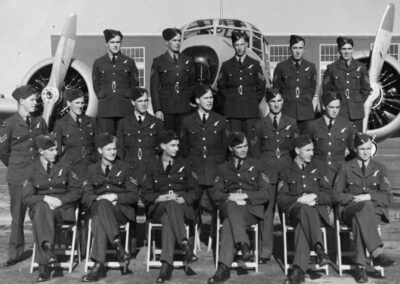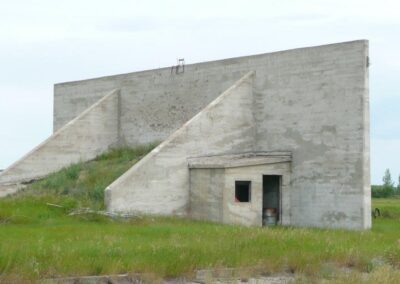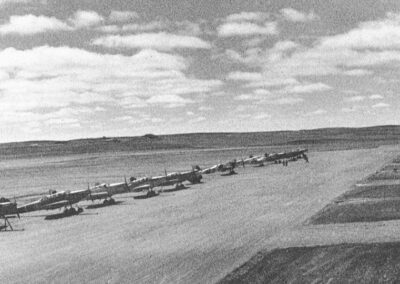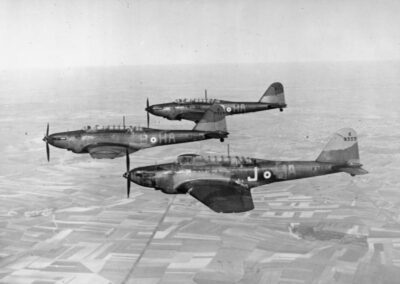History
History
The Colourful Past of Mossbank and District
Including the rural municipalities of Lake Johnston and Sutton, as well as several smaller centres, the Mossbank district is located about 45 minutes directly south of Moose Jaw, Saskatchewan. For over 200 years, the district has been at the crossroads of history, its residents have played many roles in provincial, national, and international events.
While our history has been filled with prosperity and success, we also cannot ignore the fact that our ability to thrive in this district and in this country was a direct result of the harm done to First Nations peoples. While colonizers and their descendants have worked hard to make this community inclusive and accepting, this effort was not often extended to First Nations and other minorities. So, as you learn about our town, don’t forget their (very important) role in our society, and remember to educate yourself and amplify their voices whenever possible.
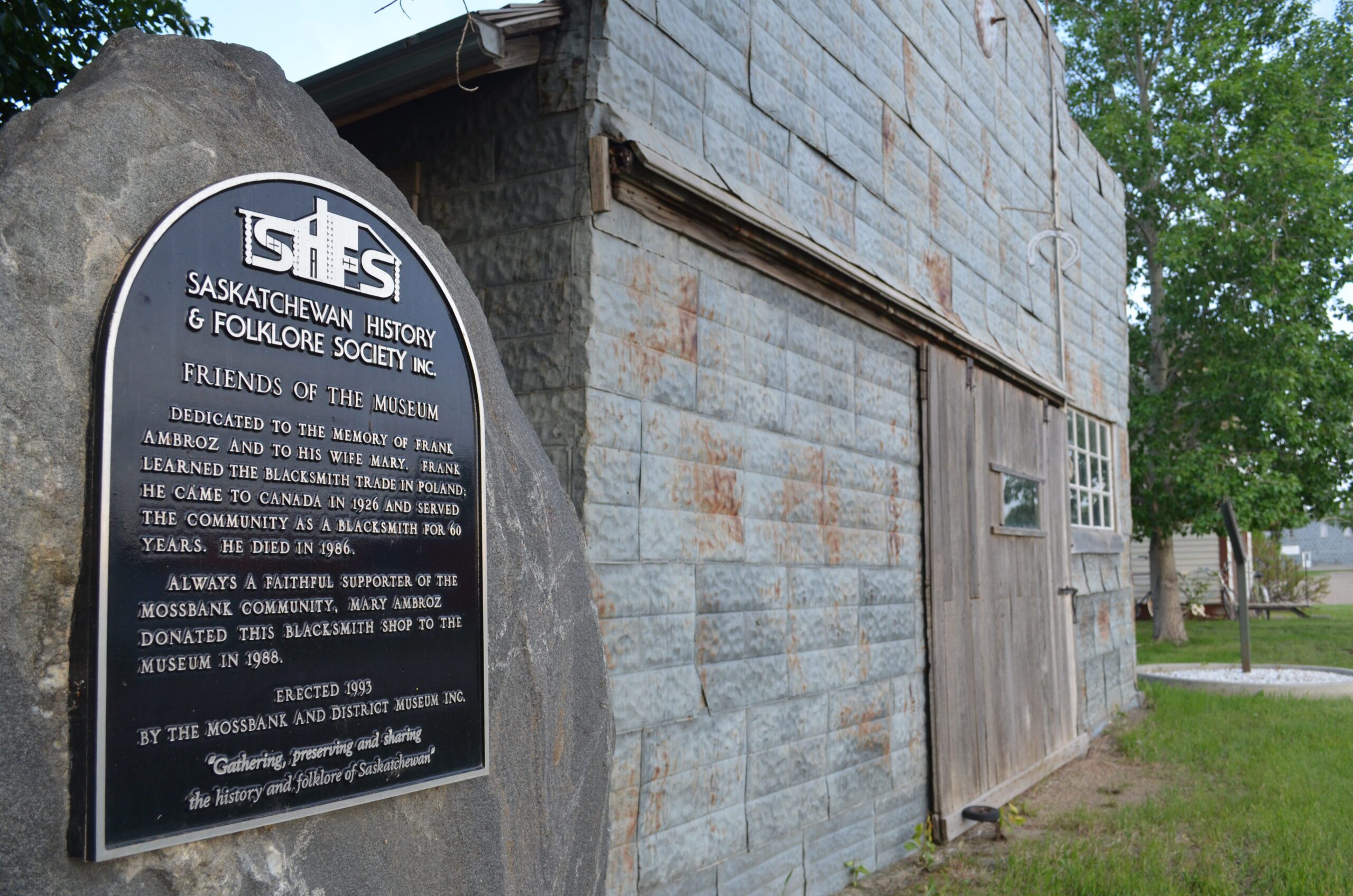
The Old Wives’ Legacy
The History of the Name
Prior to European colonization, the hills and valleys around Old Wives Lake and Lake of the Rivers were home to many First Nations peoples; numerous tipi rings and other Indigenous artifacts have been found near both lakes. This territory was incredibly important to the surrounding populations, as the regular migration of bison through the area made it a valuable hunting ground.
According to Métis guides who travelled with the North-West Mounted Police in 1874, there was a famous confrontation between the Cree and Blackfoot peoples near Old Wives Lake around 1840. Shortly before this time, raging prairie fires had driven the Cree peoples beyond their traditional hunting grounds, leading them closer to Blackfoot territory. For this reason, conflict grew between the two peoples, a conflict that eventually led to the naming of Old Wives Lake.
The Métis guides claimed a small party of Blackfoot discovered a group of Cree from the Qu’Appelle Valley who were camped near the southeastern edge of the lake. Unfortunately, the Cree – travelling with their families, over-encumbered by their provisions – couldn’t get to safety before the Blackfoot returned with a larger party the next morning. To save the group, the elderly Cree women, anticipating the morning attack, offered to remain behind as a decoy, allowing the younger members to escape during the night. Anticipating correctly, the women saw the return of the Blackfoot that morning, who, enraged to see the camp empty, killed the women in vengeance.
Despite their dismal fate, the Métis guides said the spirits of these women still inhabit the Isle of Bays in Old Wives Lake, where their laughter still taunts and mocks the Blackfoot.
There is also the lesser-known origin story, the Legend of the Old Wife. This legend states that the more accurate translation of the lake’s name is Old Wife’s Lake, or Notukeu in Cree, typically translated as “old woman.” The name refers to the wife of a Chief (whether Cree or Sioux is no longer known) who was revered as a medicine woman. It’s said that she was buried on the Isle of Bays in the middle of the lake with grand splendour, in accordance with the rites of the tribe. She was dressed in her finest garments and sat with her feet on the ground. Her tools were placed in her hands, her most prized possessions placed around her, and a burial mound erected over her. Here, she solemnly continued her prophecies. Before going out to battle, the braves would kneel in a line on the edge of the lake with their eyes fixed in the direction of the burial site as they prayed and leaned inattentively. Soon, a voice rose from the island and, little by little, became louder than the noise of the waves. It was the medicine woman’s voice. If she sounded in pain, the braves would avoid war, but if the voice sang the “warrior’s hymn,” they would run towards the enemy certain of victory.
Name Change and Restoration
The first Europeans to visit the Mossbank District were likely members of Capt. John Palliser’s survey expedition of 1857-58. By the 1860s, Indigenous presence in the district was declining due to the decrease of the bison population, which led to much of the Indigenous population dying from starvation. The primary cause of the bison decrease was the arrival of European trophy hunters, who killed the animals in vast numbers.
In 1886, the traditional name of Old Wives Lake was temporarily replaced, renamed Lake Johnston after one of the trophy hunters who hunted in the area in 1866. The name remained Lake Johnston until 1955 when Anne Cusick of Coderre lobbied for the provincial government to restore the Lake’s original name.

Post-Colonial History
The Great March West
In 1872, the government of Canada acquired the rights of the Hudson Bay Company for most of what is now Western Canada. The federal government planned to build a transcontinental railway to the west coast with the intention of populating the region with agricultural settlements. To do so, the government began the process of extinguishing Indigenous title to the land through Treaty negotiations.
 The Mossbank District was – and still is – covered under the provisions of Treaty 4, which was signed with the Southern Cree and Ojibwa in 1874.
The Mossbank District was – and still is – covered under the provisions of Treaty 4, which was signed with the Southern Cree and Ojibwa in 1874.
One year prior, the federal government created the North-West Mounted Police. The NWMP was initially responsible for driving American whiskey traders out of the Canadian west, ensuring peaceful relations with the First Nations peoples, and generally creating order before the beginning of the large-scale settlement.
In 1874, 275 NWMP officers started the Great March West. Starting at Fort Dufferin in current-day Manitoba and ending at Fort Whoop-Up in present-day Alberta, this gruelling and hazardous journey took the Mounties very close to Mossbank’s modern location.
On August 8th, the officers descended from the Cactus Hills to the east side of Old Wives Lake and continued along the lake’s southern shore. After camping one night near the lake, they pushed on to Old Wives Creek (a tributary of the Wood River) where they camped for several days.
During this respite, the Mounties encountered a group of Sioux. Up to that point, they were the first Indigenous group they had encountered. The Sioux camped near the NWMP, and the two groups held formal ceremonies and exchanged gifts on August 12th. The Sioux also visited the Mounties over the two next days, during which time they performed traditional dances and bartered with the officers. Nearly a week later, on August 18th, the NWMP resumed their westward march.
The Pioneer Era
In the early 1880s, surveyors commissioned by the Canadian government reached the Mossbank district. The surveyors divided the land into quarters and sections as outlined by the requirements of the Dominion Lands Act, which had been passed in 1872 to prepare the West for agricultural settlers.
By the summer of 1883, the new transcontinental railway had been built as far west as Swift Current, Saskatchewan. The increasing activity of the Canadian government, the railway, and the first trickle of settlers led to increased traffic on traditional First Nations trails, several of which became routes for the NWMP, traders, and, later, settlers.
The Mossbank district wasn’t opened to settlers until 1907, two years after Saskatchewan officially became a province. Once available, the area flooded with homestead claims, and, over the next several years, immigrants from Eastern Canada, the United States, and Europe arrived. The district population was a dynamic and cosmopolitan mixture of people from all over the world, including Scandinavians, Brits, Germans, Jews, Ukrainians, Fransaskois, Americans, and Chinese. The rudimentary beginnings of most of the district’s communities started immediately, but it was the construction of railway branch lines around 1912 that cemented their foundations.
In (what was at the time called) the Lake Johnston municipality, the communities of Dunkirk, Expanse, Mitchellton, Ardill, and Mossbank were built, and they were joined by Palmer, Mazenod, Ettington, and Vantage in the Sutton municipality. Mossbank became the largest and most dominant community in the area because both the Canadian Pacific and the Canadian Northern (later National) built branch lines through the community.
Although the rivalry between the two railways initially led to the creation of two competing townsites (Mossbank, the CNR location, and its CPR rival, Reycraft) by the end of the First World War (1914-1918), Mossbank had won out. The communities of the Mossbank district grew into bustling agricultural centres, and in 1920 were joined by another community named Bishopric.
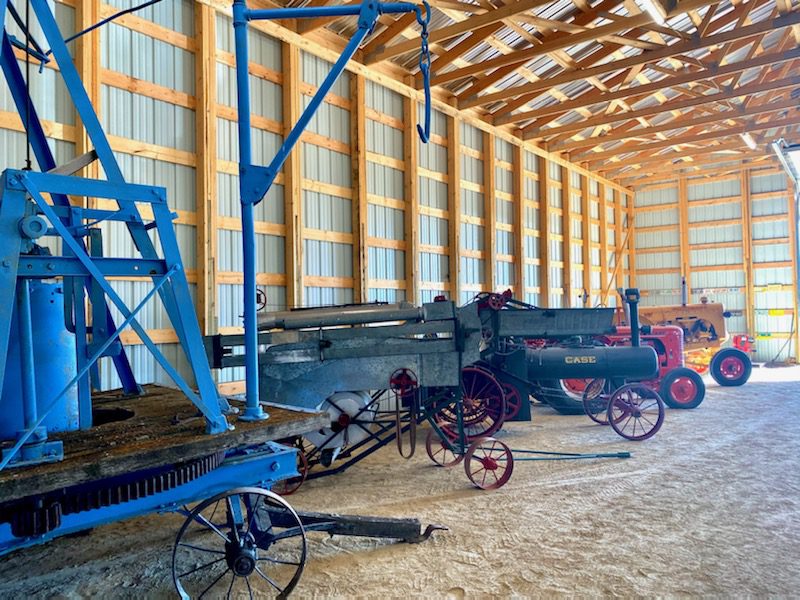
The Mossbank and District Museum has carefully documented the histories of all the communities in the Mossbank district.
The Pole Trail
The Wood Mountain-Fort Qu’Appelle Trail, which ran by the southeast corner of Old Wives Lake and very near to the current location of Mossbank, became important in 1885 when the Métis settlements around Batoche began the Northwest Resistance – read more here.
The government feared the growth of the resistance, predicting that the Métis around Wood Mountain might join. To gain control over the situation, the government-sanctioned the construction of a telegraph line along the Wood Mountain-Fort Qu’Appelle Trail to facilitate faster communication between the NWMP Wood Mountain post and other detachments.
The telegraph poles remained on the trail for many years, and eventually, the path earned the nickname, “The Pole Trail.” These poles also became a valuable guide for travellers making their way to the town, especially during snowstorms when visibility was poor.
The trail remained the primary transportation route for the Mossbank district until the arrival of the railway branch lines in 1912.
Ambroz Blacksmith Shop
Blacksmithing was perhaps the most vital industry in small prairie towns during the first half of the 20th century. It produced vital equipment and articles and kept them in operable condition. Blacksmiths also generally acted as farriers (horseshoe fitters), thereby keeping the primary source of farm power active as well as enabling the transport of farmers’ produce to markets. During the 1920s, a Polish immigrant, Frank Ambroz purchased the blacksmith shop at which he had been employed. He served the Mossbank, Saskatchewan area up until the 1970s from the same location. His blacksmith shop is the last operable in situ shop in Saskatchewan and as such has been registered as a Provincial Historic Site. The Mossbank & District Museum holds annual blacksmithing demonstrations on Canada Day and during the Old Wives Lake Festival. Blacksmithing courses are occasionally available at the Museum.
RCAF No. 2 Bombing and Gunnery School
The Royal Canadian Air Force No. 2 Bombing & Gunnery School operated in the Mossbank area from 1940 to 1944. The last remaining building at the former site (which is now the Mossbank Golf Club) has been renovated and now stands to commemorate the former base and the massive contributions of the soldiers who trained there. In total, 2,539 air bombers and 3,702 air gunners were trained at the base. The enormous size of the base can still be appreciated by looking at images of the area with Google Maps, as the concrete and asphalt runway remain (albeit in poor condition).
A map inside the building shows where the buildings were located as well as a number of information stations along the road on the way to the airstrips. Upon the closure of the base, the buildings were sold and ended up all over the province; one became the Turvey Centre in Regina, another the Homestead Museum in Hodgeville, and various others became buildings in Mossbank, but only a few remain to this day.
Initially, the base’s remote location led most to conclude that being sent there was a form of punishment, but upgrades to the facility – including a swimming pool, multiple tennis courts, and an active social program – made the soldiers look back fondly on their time at the “No. 2 Boys & Girls School”, one of the few schools where women were also stationed at the time.
Mossbank’s aquifer, as well as much of its water system, was sourced and used by the airbase and purchased by the town after the school’s closure. Many of the airmen and women returned to Mossbank after the war and raised their families there. As such, the base’s existence was historically significant for Mossbank and the town would be very different, or may not even exist, had it never been established.
Mossbank Today
In more recent times, Mossbank has continued to be an innovative community that often finds itself at the crossroads of history.
In the 1970s, the Snowbirds aeronautical team was formed at 15 Wing in Moose Jaw, and the team began its long association with the Mossbank area. Continuing the tradition started with the British Commonwealth Air Training Plan, the Snowbirds are regular visitors in the Mossbank sky, where they practice their precision flying routines.
In 2004, tragedy struck when Snowbird member Capt. Myles Selby was killed in a mid-air collision over the Mossbank district. In Capt. Selby’s memory, the town named “Selby Road” in his honour, which is a road located near the former Air Training base.
In the 1990s, Mossbank resident and author, Eileen Comstock, released the Aunt Mary in the Granary book series. These popular books relate to Comstock’s experiences growing up and living in rural Saskatchewan.
Today, Mossbank continues to play a role in the development of Saskatchewan and Canada. The Mossbank district is home to some of the most innovative and successful agricultural businesses in Canada; Mossbank entrepreneurs are distinguishing themselves in several fields, and Mossbank’s citizens continue to play leading roles in the farm movement.
Moving forward, the town is looking forward to a future as exciting as Mossbank’s colourful past.
Political History
Political Hotbed
The settlement era in the Canadian west was a time of incredible excitement and volatility. Settlers living in what they considered new land were open to new ideas and new ways of looking at the world. They championed ideas like multiculturalism, equal rights for women, populism, and cooperation that are now widely considered to be the default views in Canadian culture.
The Mossbank district was often at the centre of controversies generated by these subjects, and the area produced some prominent advocates associated with such causes. Starting in the early 1900s, farmers banded together in organizations to combat the power and influence of the Eastern Canadian businesses that controlled the grain trade.
Faced with the intransigence from such groups and the unwillingness of existing political parties to support their agendas, some farmers decided to take direct action and form new political parties.
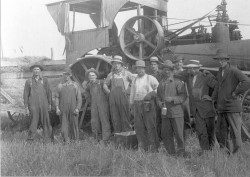 One of the first of these political parties was the United Farmers, which would eventually win elections in several provinces and, later, become the basis for the Progressive Party.
One of the first of these political parties was the United Farmers, which would eventually win elections in several provinces and, later, become the basis for the Progressive Party.
In 1919, the government held a federal by-election in the Assiniboia constituency, which included the Mossbank district. This event marked the first time that someone nominated by a farm organization ran under the United Farmers banner. The United Farmer candidate, Oliver Gould, faced William Motherwell, a veteran Liberal politician who had served as provincial Minister of Agriculture since 1905.
During the by-election, President of the United Farmers of Alberta, Henry Wise Wood, campaigned extensively for Gould and made a notable speech in Mossbank. Gould defeated Motherwell by over 5,000 votes, and once in Parliament, became one of the founding members of the Progressive Party. Gould was among the 65 Progressives who returned in the 1921 federal election, after which they became the second-largest party in the House of Commons.
Also at the forefront of farm organizations’ national political agenda was women’s rights. Ida McNeal of Expanse was one of the prominent early members of the Women’s Section of the United Grain Growers and served as President of the body from 1924 to 1926.
Thanks (in part) to McNeal’s work and community presence, Saskatchewan became the second province to grant women’s suffrage in 1917.
McNeal continued her work through the Progressive Party until the 1930s, when she stepped down for health reasons. One of the women who continued her work was Louise Lucas of Mazenod. Lucas joined the Saskatchewan Wheat Pool in the 1920s, but her political involvement started when she was elected President of the Women’s Section of the United Farmers of Canada in 1931. By this time, the Progressive Party was defunct and the need for an effective political vehicle for farmers was apparent; interest was even more pressing due to the ravages of the Great Depression.
Lucas believed the Co-operative Commonwealth Federation (CCF), a new political party she helped found in 1932, would serve as an adequate replacement. She became a member of the national and provincial executives of the CCF and travelled across the province and country tirelessly promoting the new party. For her work, she became known as “The Mother of the CCF,” and her contributions were credited by Tommy Douglas and others as playing a role in the CCF’s landmark provincial election victory in 1994.
The Debate of the Century
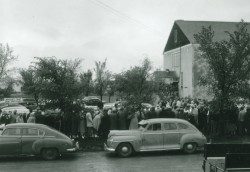 With WWII won, attention turned back to more local matters, and in the next decades, provincial politics became hotly contested. The CCF government of Premier Tommy Douglas emphasized government involvement in the economy including the use of government-owned crown corporations to advance their policies. Douglas’s opponents often supported the Liberal party, which felt too much government intervention in the economy was detrimental. However, the Liberals could not overcome the personal popularity of Douglas and his party’s programs, and between 1944 and 1956, they repeatedly lost elections to the CCF.
With WWII won, attention turned back to more local matters, and in the next decades, provincial politics became hotly contested. The CCF government of Premier Tommy Douglas emphasized government involvement in the economy including the use of government-owned crown corporations to advance their policies. Douglas’s opponents often supported the Liberal party, which felt too much government intervention in the economy was detrimental. However, the Liberals could not overcome the personal popularity of Douglas and his party’s programs, and between 1944 and 1956, they repeatedly lost elections to the CCF.
Mossbank went against this provincial trend, and during this period, local voters tended to vote for Liberal candidates. By 1955, they gained more popularity province-wide, when Ross Thatcher, the CCF Member of Parliament for Moose Jaw, left the CCF and joined the Liberal party within the year. Subsequently, in the 1957 federal election, Thatcher opted to run for the Liberals in the Assiniboia constituency rather than Moose Jaw. While Moose Jaw was a CCF stronghold, the Liberals were stronger in Assiniboia, which included Mossbank.
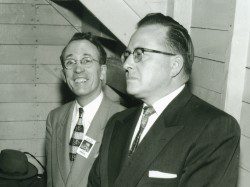 Prior to the 1957 election, Thatcher gave a speech in which he claimed Saskatchewan’s crown corporations were a “dismal failure.” Douglas was infuriated with this claim, and, at the nomination meeting for Hazen Argue – the CCF candidate for Assiniboia – he challenged Thatcher to a debate on the record over Saskatchewan’s crown corporations.
Prior to the 1957 election, Thatcher gave a speech in which he claimed Saskatchewan’s crown corporations were a “dismal failure.” Douglas was infuriated with this claim, and, at the nomination meeting for Hazen Argue – the CCF candidate for Assiniboia – he challenged Thatcher to a debate on the record over Saskatchewan’s crown corporations.
Douglas stated he would debate Thatcher anytime and anywhere; Thatcher accepted and chose Mossbank as the location.
The debate took place on May 20th, 1957. Over a thousand people packed in the community hall while, despite heavy rain, hundreds more listened on speakers outside the building. The debate was also broadcast live on radio and attracted a huge provincial audience. In addition to provincial media, the event was covered by the press across Canada, with reporters across the country visiting the town.
Ultimately, the debate proved to be a rallying point for the Liberals. People anticipated Douglas would mercilessly thrash Thatcher, but the Liberal candidate’s performance was strong enough that people agreed that he held his own. Although Thatcher lost both the 1957 and 1958 elections to Argue, he became widely regarded as the champion of free enterprise.
It was largely due to the Mossbank Debate that Thatcher was elected provincial leader of the Liberal Party in 1959; he later became Premier himself, after winning the 1964 provincial election.
This debate was deemed “The Debate of the Century,” and was reenacted in 2003 in Mossbank at the same hall where it originally took place. Over 600 people attended two sold-out performances.
The Aerodrome of Democracy
The CCF’s election took place shortly before the end of WWII (1939-45).
During the war, the Mossbank district made a significant contribution to the Allied Victory; in 1939, Canada, Australia, New Zealand, and Great Britain agreed to participate in the British Commonwealth Air Training Plan (BCATP). The purpose of this plan was to train aircrews for the allied war against Germany. All BCATP training bases were located in Canada, 20 of them in Saskatchewan; Saskatchewan had more bases than any other province aside from Ontario.
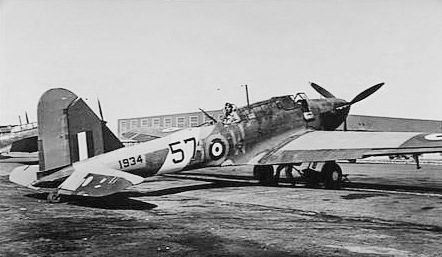 The BCATP No. 2 Bombing and Gunnery School was built outside Mossbank, and between 1940 and 1944, trained over 6,000 men from all four participating nations. Due to the importance of the BCATP to the war effort, American President Franklin Roosevelt described Canada as “The Aerodrome of Democracy.”
The BCATP No. 2 Bombing and Gunnery School was built outside Mossbank, and between 1940 and 1944, trained over 6,000 men from all four participating nations. Due to the importance of the BCATP to the war effort, American President Franklin Roosevelt described Canada as “The Aerodrome of Democracy.”
In 1944, anticipating the end of the war, the federal government began dismantling the BCATP bases, including Mossbank’s. Several of the buildings from the airbase were moved to centres elsewhere in the province and to Mossbank itself. The Turvey Centre in Regina, the Western Development Museum in North Battleford, the Mossbank Golf Clubhouse (located at the original airbase site), and Skates’N’Skirts in Mossbank all use buildings originally from the Mossbank airbase.
Click to see a video on the No. 2 Bombing & Gunnery School courtesy of Kris and Carla at Wandering Whimzy!
Name Origin
History
The Colourful Past of Mossbank and District
Including the rural municipalities of Lake Johnston and Sutton, as well as several smaller centres, the Mossbank district is located about 45 minutes directly south of Moose Jaw, Saskatchewan. For over 200 years, the district has been at the crossroads of history, its residents have played many roles in provincial, national, and international events.
While our history has been filled with prosperity and success, we also cannot ignore the fact that our ability to thrive in this district and in this country was a direct result of the harm done to First Nations peoples. While colonizers and their descendants have worked hard to make this community inclusive and accepting, this effort was not often extended to First Nations and other minorities. So, as you learn about our town, don’t forget their (very important) role in our society, and remember to educate yourself and amplify their voices whenever possible.

The Old Wives’ Legacy
The History of the Name
Prior to European colonization, the hills and valleys around Old Wives Lake and Lake of the Rivers were home to many First Nations peoples; numerous tipi rings and other Indigenous artifacts have been found near both lakes. This territory was incredibly important to the surrounding populations, as the regular migration of bison through the area made it a valuable hunting ground.
According to Métis guides who travelled with the North-West Mounted Police in 1874, there was a famous confrontation between the Cree and Blackfoot peoples near Old Wives Lake around 1840. Shortly before this time, raging prairie fires had driven the Cree peoples beyond their traditional hunting grounds, leading them closer to Blackfoot territory. For this reason, conflict grew between the two peoples, a conflict that eventually led to the naming of Old Wives Lake.
The Métis guides claimed a small party of Blackfoot discovered a group of Cree from the Qu’Appelle Valley who were camped near the southeastern edge of the lake. Unfortunately, the Cree – travelling with their families, over-encumbered by their provisions – couldn’t get to safety before the Blackfoot returned with a larger party the next morning. To save the group, the elderly Cree women, anticipating the morning attack, offered to remain behind as a decoy, allowing the younger members to escape during the night. Anticipating correctly, the women saw the return of the Blackfoot that morning, who, enraged to see the camp empty, killed the women in vengeance.
Despite their dismal fate, the Métis guides said the spirits of these women still inhabit the Isle of Bays in Old Wives Lake, where their laughter still taunts and mocks the Blackfoot.
There is also the lesser-known origin story, the Legend of the Old Wife. This legend states that the more accurate translation of the lake’s name is Old Wife’s Lake, or Notukeu in Cree, typically translated as “old woman.” The name refers to the wife of a Chief (whether Cree or Sioux is no longer known) who was revered as a medicine woman. It’s said that she was buried on the Isle of Bays in the middle of the lake with grand splendour, in accordance with the rites of the tribe. She was dressed in her finest garments and sat with her feet on the ground. Her tools were placed in her hands, her most prized possessions placed around her, and a burial mound erected over her. Here, she solemnly continued her prophecies. Before going out to battle, the braves would kneel in a line on the edge of the lake with their eyes fixed in the direction of the burial site as they prayed and leaned inattentively. Soon, a voice rose from the island and, little by little, became louder than the noise of the waves. It was the medicine woman’s voice. If she sounded in pain, the braves would avoid war, but if the voice sang the “warrior’s hymn,” they would run towards the enemy certain of victory.
Name Change and Restoration
The first Europeans to visit the Mossbank District were likely members of Capt. John Palliser’s survey expedition of 1857-58. By the 1860s, Indigenous presence in the district was declining due to the decrease of the bison population, which led to much of the Indigenous population dying from starvation. The primary cause of the bison decrease was the arrival of European trophy hunters, who killed the animals in vast numbers.
In 1886, the traditional name of Old Wives Lake was temporarily replaced, renamed Lake Johnston after one of the trophy hunters who hunted in the area in 1866. The name remained Lake Johnston until 1955 when Anne Cusick of Coderre lobbied for the provincial government to restore the Lake’s original name.
Post-Colonial History
Post-Colonial History
The Great March West
In 1872, the government of Canada acquired the rights of the Hudson Bay Company for most of what is now Western Canada. The federal government planned to build a transcontinental railway to the west coast with the intention of populating the region with agricultural settlements. To do so, the government began the process of extinguishing Indigenous title to the land through Treaty negotiations.

The Mossbank District was – and still is – covered under the provisions of Treaty 4, which was signed with the Southern Cree and Ojibwa in 1874.
One year prior, the federal government created the North-West Mounted Police. The NWMP was initially responsible for driving American whiskey traders out of the Canadian west, ensuring peaceful relations with the First Nations peoples, and generally creating order before the beginning of the large-scale settlement.
In 1874, 275 NWMP officers started the Great March West. Starting at Fort Dufferin in current-day Manitoba and ending at Fort Whoop-Up in present-day Alberta, this gruelling and hazardous journey took the Mounties very close to Mossbank’s modern location.
On August 8th, the officers descended from the Cactus Hills to the east side of Old Wives Lake and continued along the lake’s southern shore. After camping one night near the lake, they pushed on to Old Wives Creek (a tributary of the Wood River) where they camped for several days.
During this respite, the Mounties encountered a group of Sioux. Up to that point, they were the first Indigenous group they had encountered. The Sioux camped near the NWMP, and the two groups held formal ceremonies and exchanged gifts on August 12th. The Sioux also visited the Mounties over the two next days, during which time they performed traditional dances and bartered with the officers. Nearly a week later, on August 18th, the NWMP resumed their westward march.
The Pioneer Era
In the early 1880s, surveyors commissioned by the Canadian government reached the Mossbank district. The surveyors divided the land into quarters and sections as outlined by the requirements of the Dominion Lands Act, which had been passed in 1872 to prepare the West for agricultural settlers.
By the summer of 1883, the new transcontinental railway had been built as far west as Swift Current, Saskatchewan. The increasing activity of the Canadian government, the railway, and the first trickle of settlers led to increased traffic on traditional First Nations trails, several of which became routes for the NWMP, traders, and, later, settlers.
The Mossbank district wasn’t opened to settlers until 1907, two years after Saskatchewan officially became a province. Once available, the area flooded with homestead claims, and, over the next several years, immigrants from Eastern Canada, the United States, and Europe arrived. The district population was a dynamic and cosmopolitan mixture of people from all over the world, including Scandinavians, Brits, Germans, Jews, Ukrainians, Fransaskois, Americans, and Chinese. The rudimentary beginnings of most of the district’s communities started immediately, but it was the construction of railway branch lines around 1912 that cemented their foundations.
In (what was at the time called) the Lake Johnston municipality, the communities of Dunkirk, Expanse, Mitchellton, Ardill, and Mossbank were built, and they were joined by Palmer, Mazenod, Ettington, and Vantage in the Sutton municipality. Mossbank became the largest and most dominant community in the area because both the Canadian Pacific and the Canadian Northern (later National) built branch lines through the community.
Although the rivalry between the two railways initially led to the creation of two competing townsites (Mossbank, the CNR location, and its CPR rival, Reycraft) by the end of the First World War (1914-1918), Mossbank had won out. The communities of the Mossbank district grew into bustling agricultural centres, and in 1920 were joined by another community named Bishopric.

The Mossbank and District Museum has carefully documented the histories of all the communities in the Mossbank district.
The Pole Trail
The Wood Mountain-Fort Qu’Appelle Trail, which ran by the southeast corner of Old Wives Lake and very near to the current location of Mossbank, became important in 1885 when the Métis settlements around Batoche began the Northwest Resistance – read more here.
The government feared the growth of the resistance, predicting that the Métis around Wood Mountain might join. To gain control over the situation, the government-sanctioned the construction of a telegraph line along the Wood Mountain-Fort Qu’Appelle Trail to facilitate faster communication between the NWMP Wood Mountain post and other detachments.
The telegraph poles remained on the trail for many years, and eventually, the path earned the nickname, “The Pole Trail.” These poles also became a valuable guide for travellers making their way to the town, especially during snowstorms when visibility was poor.
The trail remained the primary transportation route for the Mossbank district until the arrival of the railway branch lines in 1912.
Ambroz Blacksmith Shop
Blacksmithing was perhaps the most vital industry in small prairie towns during the first half of the 20th century. It produced vital equipment and articles and kept them in operable condition. Blacksmiths also generally acted as farriers (horseshoe fitters), thereby keeping the primary source of farm power active as well as enabling the transport of farmers’ produce to markets. During the 1920s, a Polish immigrant, Frank Ambroz purchased the blacksmith shop at which he had been employed. He served the Mossbank, Saskatchewan area up until the 1970s from the same location. His blacksmith shop is the last operable in situ shop in Saskatchewan and as such has been registered as a Provincial Historic Site. The Mossbank & District Museum holds annual blacksmithing demonstrations on Canada Day and during the Old Wives Lake Festival. Blacksmithing courses are occasionally available at the Museum.
RCAF No. 2 Bombing and Gunnery School
The Royal Canadian Air Force No. 2 Bombing & Gunnery School operated in the Mossbank area from 1940 to 1944. The last remaining building at the former site (which is now the Mossbank Golf Club) has been renovated and now stands to commemorate the former base and the massive contributions of the soldiers who trained there. In total, 2,539 air bombers and 3,702 air gunners were trained at the base. The enormous size of the base can still be appreciated by looking at images of the area with Google Maps, as the concrete and asphalt runway remain (albeit in poor condition).
A map inside the building shows where the buildings were located as well as a number of information stations along the road on the way to the airstrips. Upon the closure of the base, the buildings were sold and ended up all over the province; one became the Turvey Centre in Regina, another the Homestead Museum in Hodgeville, and various others became buildings in Mossbank, but only a few remain to this day.
Initially, the base’s remote location led most to conclude that being sent there was a form of punishment, but upgrades to the facility – including a swimming pool, multiple tennis courts, and an active social program – made the soldiers look back fondly on their time at the “No. 2 Boys & Girls School”, one of the few schools where women were also stationed at the time.
Mossbank’s aquifer, as well as much of its water system, was sourced and used by the airbase and purchased by the town after the school’s closure. Many of the airmen and women returned to Mossbank after the war and raised their families there. As such, the base’s existence was historically significant for Mossbank and the town would be very different, or may not even exist, had it never been established.
Mossbank Today
In more recent times, Mossbank has continued to be an innovative community that often finds itself at the crossroads of history.
In the 1970s, the Snowbirds aeronautical team was formed at 15 Wing in Moose Jaw, and the team began its long association with the Mossbank area. Continuing the tradition started with the British Commonwealth Air Training Plan, the Snowbirds are regular visitors in the Mossbank sky, where they practice their precision flying routines.
In 2004, tragedy struck when Snowbird member Capt. Myles Selby was killed in a mid-air collision over the Mossbank district. In Capt. Selby’s memory, the town named “Selby Road” in his honour, which is a road located near the former Air Training base.
In the 1990s, Mossbank resident and author, Eileen Comstock, released the Aunt Mary in the Granary book series. These popular books relate to Comstock’s experiences growing up and living in rural Saskatchewan.
Today, Mossbank continues to play a role in the development of Saskatchewan and Canada. The Mossbank district is home to some of the most innovative and successful agricultural businesses in Canada; Mossbank entrepreneurs are distinguishing themselves in several fields, and Mossbank’s citizens continue to play leading roles in the farm movement.
Moving forward, the town is looking forward to a future as exciting as Mossbank’s colourful past.
Political History
Political History
Political Hotbed
The settlement era in the Canadian west was a time of incredible excitement and volatility. Settlers living in what they considered new land were open to new ideas and new ways of looking at the world. They championed ideas like multiculturalism, equal rights for women, populism, and cooperation that are now widely considered to be the default views in Canadian culture.
The Mossbank district was often at the centre of controversies generated by these subjects, and the area produced some prominent advocates associated with such causes. Starting in the early 1900s, farmers banded together in organizations to combat the power and influence of the Eastern Canadian businesses that controlled the grain trade.
Faced with the intransigence from such groups and the unwillingness of existing political parties to support their agendas, some farmers decided to take direct action and form new political parties.

One of the first of these political parties was the United Farmers, which would eventually win elections in several provinces and, later, become the basis for the Progressive Party.
In 1919, the government held a federal by-election in the Assiniboia constituency, which included the Mossbank district. This event marked the first time that someone nominated by a farm organization ran under the United Farmers banner. The United Farmer candidate, Oliver Gould, faced William Motherwell, a veteran Liberal politician who had served as provincial Minister of Agriculture since 1905.
During the by-election, President of the United Farmers of Alberta, Henry Wise Wood, campaigned extensively for Gould and made a notable speech in Mossbank. Gould defeated Motherwell by over 5,000 votes, and once in Parliament, became one of the founding members of the Progressive Party. Gould was among the 65 Progressives who returned in the 1921 federal election, after which they became the second-largest party in the House of Commons.
Also at the forefront of farm organizations’ national political agenda was women’s rights. Ida McNeal of Expanse was one of the prominent early members of the Women’s Section of the United Grain Growers and served as President of the body from 1924 to 1926.
Thanks (in part) to McNeal’s work and community presence, Saskatchewan became the second province to grant women’s suffrage in 1917.
McNeal continued her work through the Progressive Party until the 1930s, when she stepped down for health reasons. One of the women who continued her work was Louise Lucas of Mazenod. Lucas joined the Saskatchewan Wheat Pool in the 1920s, but her political involvement started when she was elected President of the Women’s Section of the United Farmers of Canada in 1931. By this time, the Progressive Party was defunct and the need for an effective political vehicle for farmers was apparent; interest was even more pressing due to the ravages of the Great Depression.
Lucas believed the Co-operative Commonwealth Federation (CCF), a new political party she helped found in 1932, would serve as an adequate replacement. She became a member of the national and provincial executives of the CCF and travelled across the province and country tirelessly promoting the new party. For her work, she became known as “The Mother of the CCF,” and her contributions were credited by Tommy Douglas and others as playing a role in the CCF’s landmark provincial election victory in 1994.
The Debate of the Century

With WWII won, attention turned back to more local matters, and in the next decades, provincial politics became hotly contested. The CCF government of Premier Tommy Douglas emphasized government involvement in the economy including the use of government-owned crown corporations to advance their policies. Douglas’s opponents often supported the Liberal party, which felt too much government intervention in the economy was detrimental. However, the Liberals could not overcome the personal popularity of Douglas and his party’s programs, and between 1944 and 1956, they repeatedly lost elections to the CCF.
Mossbank went against this provincial trend, and during this period, local voters tended to vote for Liberal candidates. By 1955, they gained more popularity province-wide, when Ross Thatcher, the CCF Member of Parliament for Moose Jaw, left the CCF and joined the Liberal party within the year. Subsequently, in the 1957 federal election, Thatcher opted to run for the Liberals in the Assiniboia constituency rather than Moose Jaw. While Moose Jaw was a CCF stronghold, the Liberals were stronger in Assiniboia, which included Mossbank.

Prior to the 1957 election, Thatcher gave a speech in which he claimed Saskatchewan’s crown corporations were a “dismal failure.” Douglas was infuriated with this claim, and, at the nomination meeting for Hazen Argue – the CCF candidate for Assiniboia – he challenged Thatcher to a debate on the record over Saskatchewan’s crown corporations.
Douglas stated he would debate Thatcher anytime and anywhere; Thatcher accepted and chose Mossbank as the location.
The debate took place on May 20th, 1957. Over a thousand people packed in the community hall while, despite heavy rain, hundreds more listened on speakers outside the building. The debate was also broadcast live on radio and attracted a huge provincial audience. In addition to provincial media, the event was covered by the press across Canada, with reporters across the country visiting the town.
Ultimately, the debate proved to be a rallying point for the Liberals. People anticipated Douglas would mercilessly thrash Thatcher, but the Liberal candidate’s performance was strong enough that people agreed that he held his own. Although Thatcher lost both the 1957 and 1958 elections to Argue, he became widely regarded as the champion of free enterprise.
It was largely due to the Mossbank Debate that Thatcher was elected provincial leader of the Liberal Party in 1959; he later became Premier himself, after winning the 1964 provincial election.
This debate was deemed “The Debate of the Century,” and was reenacted in 2003 in Mossbank at the same hall where it originally took place. Over 600 people attended two sold-out performances.
Airbase History
The Aerodrome of Democracy
The CCF’s election took place shortly before the end of WWII (1939-45).
During the war, the Mossbank district made a significant contribution to the Allied Victory; in 1939, Canada, Australia, New Zealand, and Great Britain agreed to participate in the British Commonwealth Air Training Plan (BCATP). The purpose of this plan was to train aircrews for the allied war against Germany. All BCATP training bases were located in Canada, 20 of them in Saskatchewan; Saskatchewan had more bases than any other province aside from Ontario.

The BCATP No. 2 Bombing and Gunnery School was built outside Mossbank, and between 1940 and 1944, trained over 6,000 men from all four participating nations. Due to the importance of the BCATP to the war effort, American President Franklin Roosevelt described Canada as “The Aerodrome of Democracy.”
In 1944, anticipating the end of the war, the federal government began dismantling the BCATP bases, including Mossbank’s. Several of the buildings from the airbase were moved to centres elsewhere in the province and to Mossbank itself. The Turvey Centre in Regina, the Western Development Museum in North Battleford, the Mossbank Golf Clubhouse (located at the original airbase site), and Skates’N’Skirts in Mossbank all use buildings originally from the Mossbank airbase.
Click to see a video on the No. 2 Bombing & Gunnery School courtesy of Kris and Carla at Wandering Whimzy!
Bibliography
- Eisler, Dale Rumours of Glory: Saskatchewan and the Thatcher Years (1987).
- Gauthier, David (editor) The Encyclopedia of Saskatchewan: A Living Legacy (2005).
- Hollihan, Tony The Mounties March West (2004).
- Lea Heide, Rachel & Herrington, Ross. “British Commonwealth Air Training Plan,” The Encyclopedia of Saskatchewan. Canadian Plains Research Centre, 2005, p. 129-130.
- Peters, Hammerson. “The Legend of Old Wives Lake,” Mysteries of Canada. 10 March, 2021.
- Quirring, Brett (editor) Saskatchewan Politicians: Lives Past and Present (2004).
- Saskatchewan Archives Board, T. C. Douglas Papers, R-33.1 cxxix.958(146)
- Zado (Ray), Phyllis (editor) Furrows and Faith: A History of the Lake Johnston and Sutton RMs (1980).
